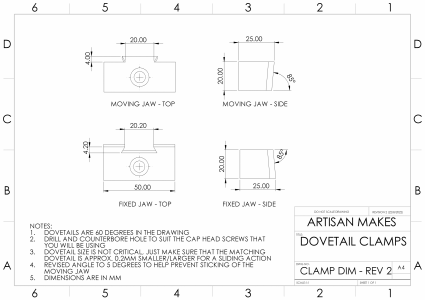- Joined
- Mar 26, 2018
- Messages
- 8,410
Hi,
I watched this video and decided it would be a fun project. (Low profile side clamps for the mill table)
I'm going to use A2 then harden the pieces and grind them to a nice finish. I'm going to use 5/16'" hold down bolts so I'll make some custom T-nuts as well. I plan on making two sets.
I bought a new dovetail cutter that takes three carbide inserts. The HSS version seemed like they would have a short life. imho anyway.
The angle of the sliding components was changed to 5 degrees by the author-Artisan Makes.
I sure wish he'd get a band saw.
Before I get started, I decided to bone up on dovetails via the machinery's handbook. The 19th addition does not have it listed in the index. I went to the 12th edition and found it.
I guess dovetails have been eliminated from machinery sometime between 1944 and 1971

I watched this video and decided it would be a fun project. (Low profile side clamps for the mill table)
I'm going to use A2 then harden the pieces and grind them to a nice finish. I'm going to use 5/16'" hold down bolts so I'll make some custom T-nuts as well. I plan on making two sets.
I bought a new dovetail cutter that takes three carbide inserts. The HSS version seemed like they would have a short life. imho anyway.
The angle of the sliding components was changed to 5 degrees by the author-Artisan Makes.
I sure wish he'd get a band saw.
Before I get started, I decided to bone up on dovetails via the machinery's handbook. The 19th addition does not have it listed in the index. I went to the 12th edition and found it.
I guess dovetails have been eliminated from machinery sometime between 1944 and 1971

Last edited:

